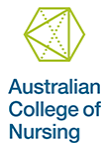Breast Cancers

This unit of study is designed for both breast specialist and generalist nurses. The unit of study reviews normal anatomy and physiology of the breast in relation to pathological findings associated with the different types of breast cancer. Global issues of epidemiology, aetiology, risk factors, genetics, and breast cancer screening and diagnostic factors are discussed in detail. Clinical presentation, diagnostic strategies, pathology findings and pathophysiology of specific types of breast cancers are addressed in relation to current treatment guidelines.
Hours of Study: 150
Credit Points : 6
Theme 1: The context of breast Cancer
Identify the impact of breast cancer in the local, national and international current setting context.
Theme 2: Transition from normal cells to breast cancer
Evaluate the influence of breast cancer programs and services in the early detection, diagnosis, treatment and improved survival outcomes of breast cancer.
Theme 3: Diagnosis and pathology of breast cancer
- Develop specialist knowledge about types of breast cancer and their associated specific pathology results.
- Evaluate the psychosocial support required for people who undergo genetic testing and are diagnosed with abnormal genetic findings.
- Reflect on their own values, beliefs and attitudes to demonstrate an awareness and sensitivity to the needs of culturally and linguistically diverse individuals as well as the cultural needs of indigenous Australians.
- Anaesthesia Fundamentals | Anatomy | Hazards of Po...
- Posted By eIntegrity Healthcare e-Learning
- Posted Date: 2024-11-25
- Location:Online
- The patient positioned for surgery is vulnerable to extraneous harm. Knowledge of the common injuries and understanding of the causes of harm enables the anaesthetist to minimize the risks.
- Anaesthesia Fundamentals | Anatomy | Bones And Joi...
- Posted By eIntegrity Healthcare e-Learning
- Posted Date: 2024-11-25
- Location:Online
- This session describes the anatomy of the upper and lower limbs, concentrating on the bones and joints. Particular attention is paid to those bones and joints that are of importance to the anaesthetist.
- Anaesthesia Fundamentals | Anatomy | Facial Skelet...
- Posted By eIntegrity Healthcare e-Learning
- Posted Date: 2024-11-25
- Location:Online
- This session describes the bones of the facial skeleton and skull vault. The important muscles that move the mandible are described. The classification and positions of fracture lines commonly seen following trauma to the face and surgical osteotomy are a
- Anaesthesia Fundamentals | Anatomy | Spine Part 2:...
- Posted By eIntegrity Healthcare e-Learning
- Posted Date: 2024-11-25
- Location:Online
- This session covers the anatomy of the sacrum, coccyx and sacral hiatus. It describes the intervertebral discs and spinal ligaments, and the vertebral levels of some of the surface markings of the body. The different types of spina bifida are reviewed.
- Anaesthesia Fundamentals | Anatomy | Spine: Cervic...
- Posted By eIntegrity Healthcare e-Learning
- Posted Date: 2024-11-25
- Location:Online
- The session covers the anatomy of the bones of the vertebral column in the cervical, thoracic and lumbar regions.


